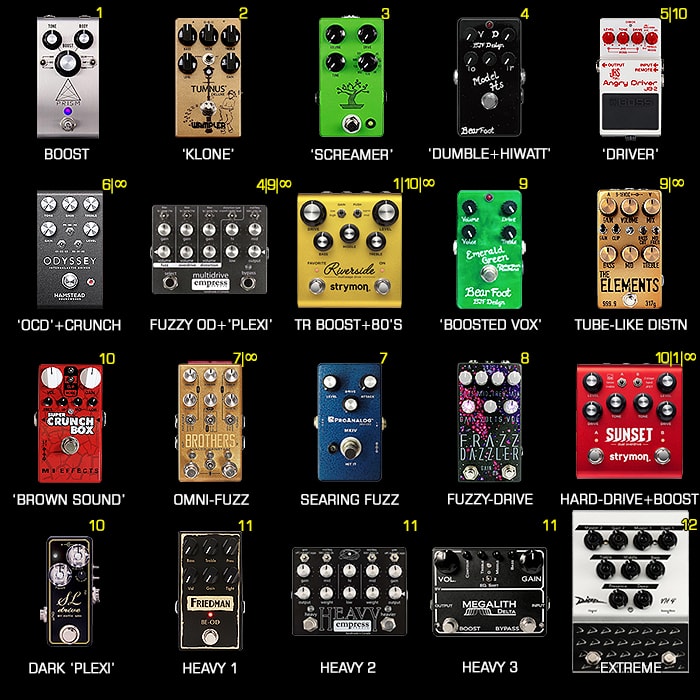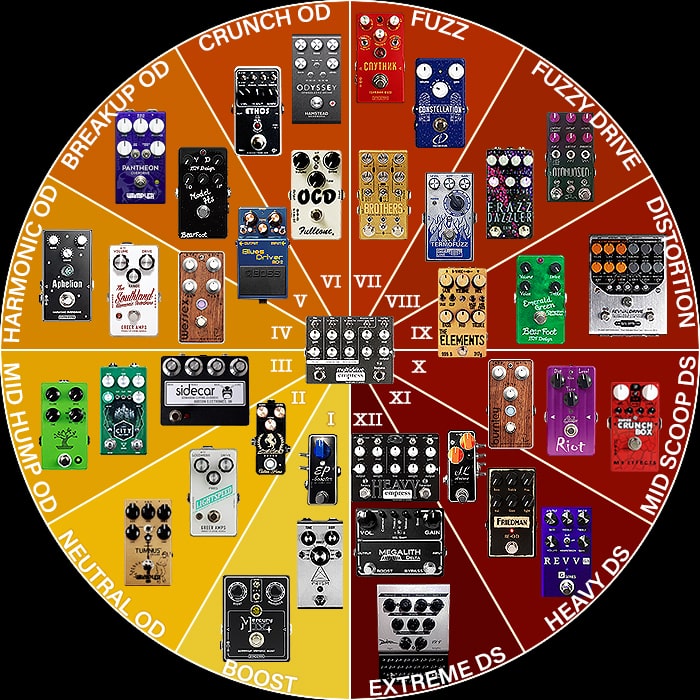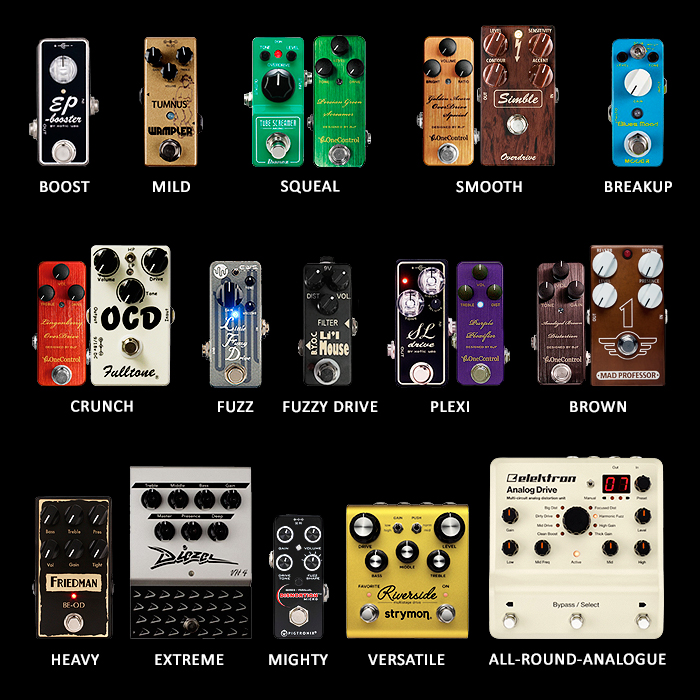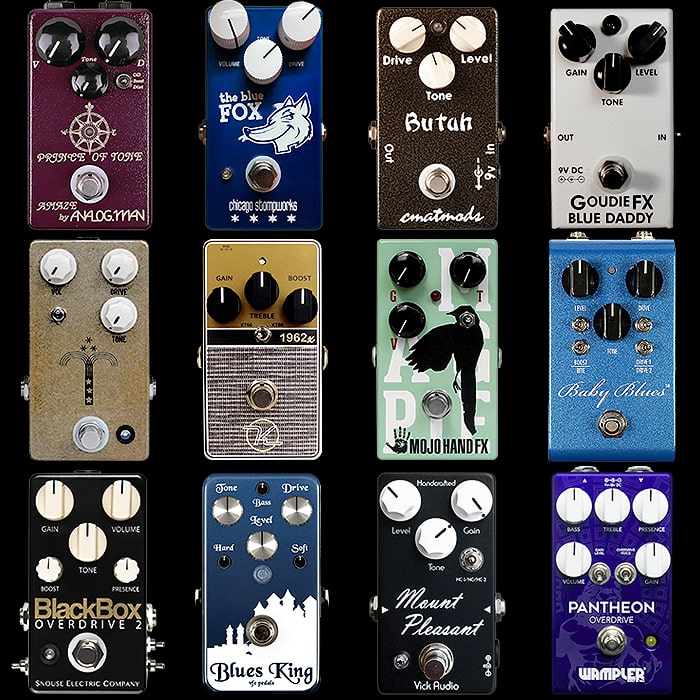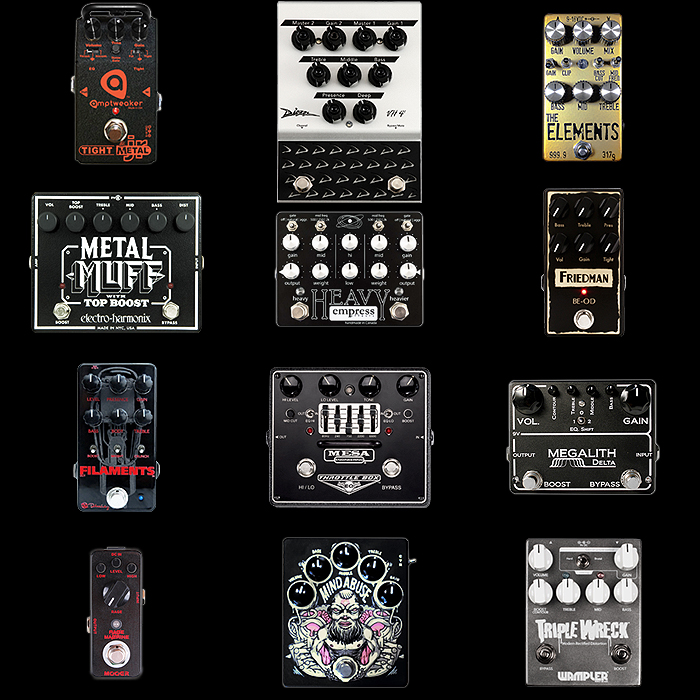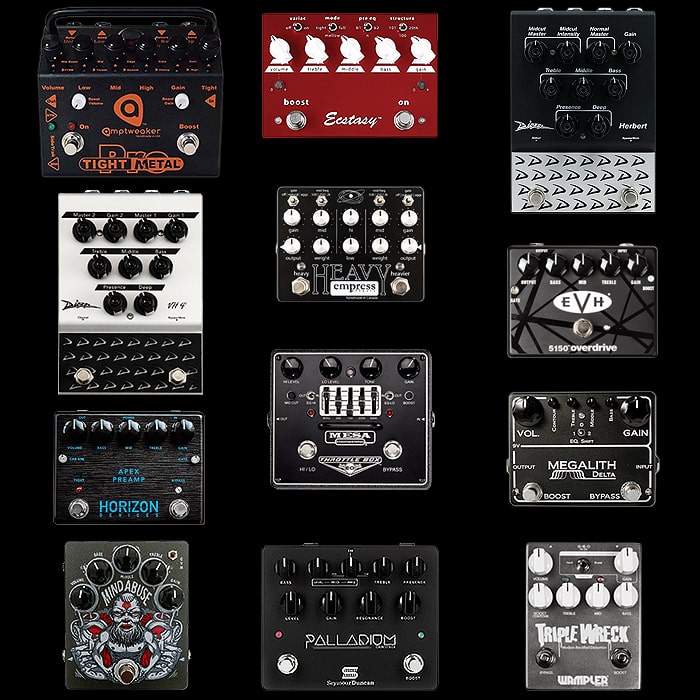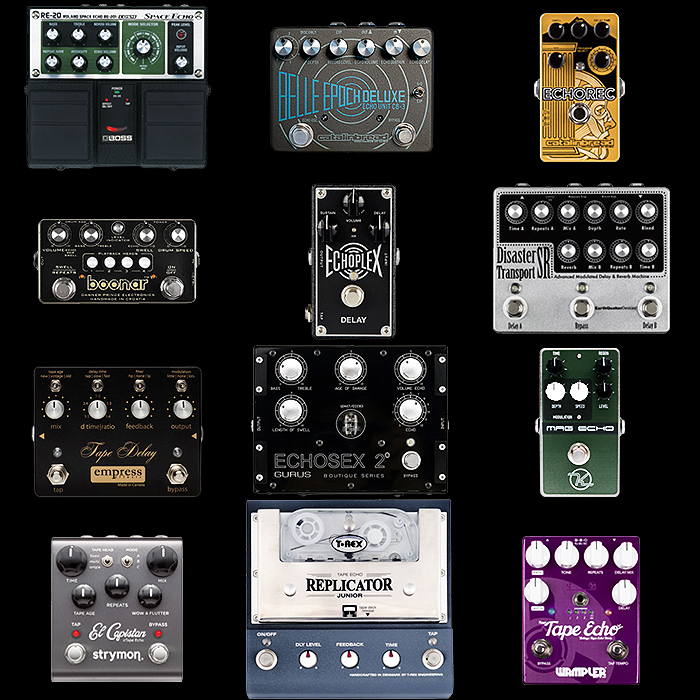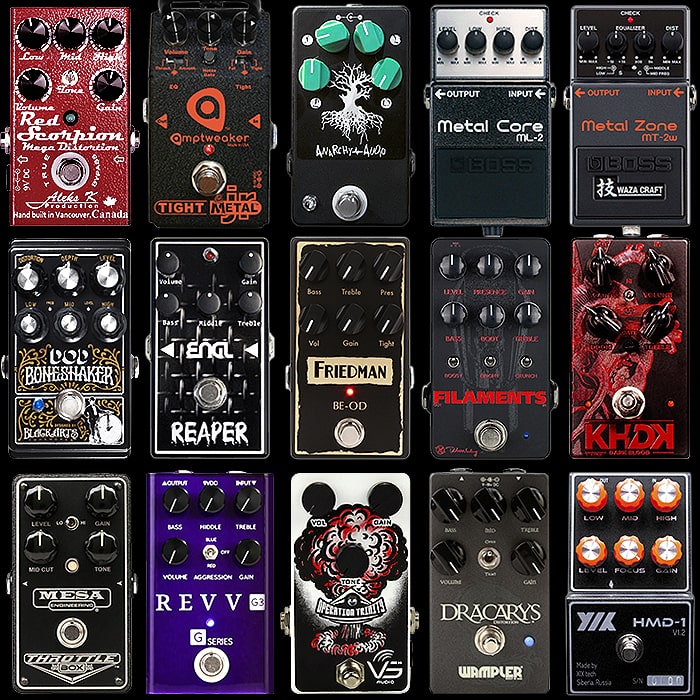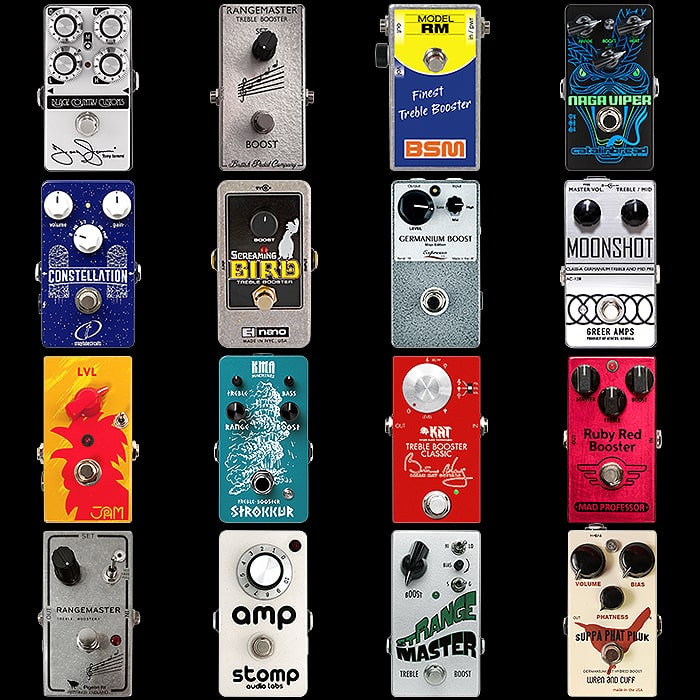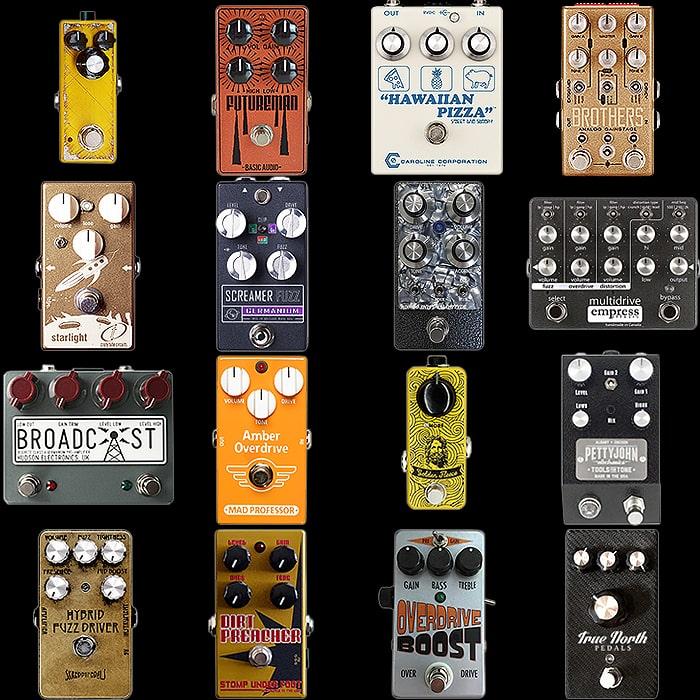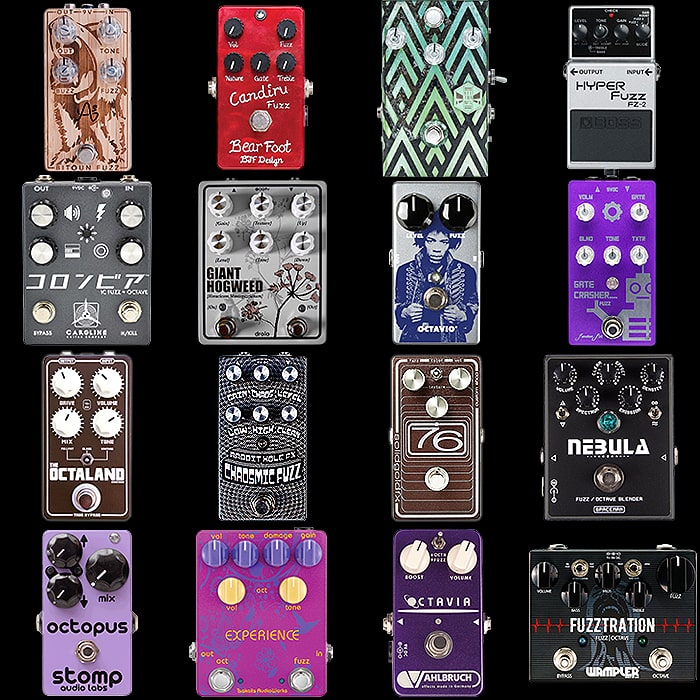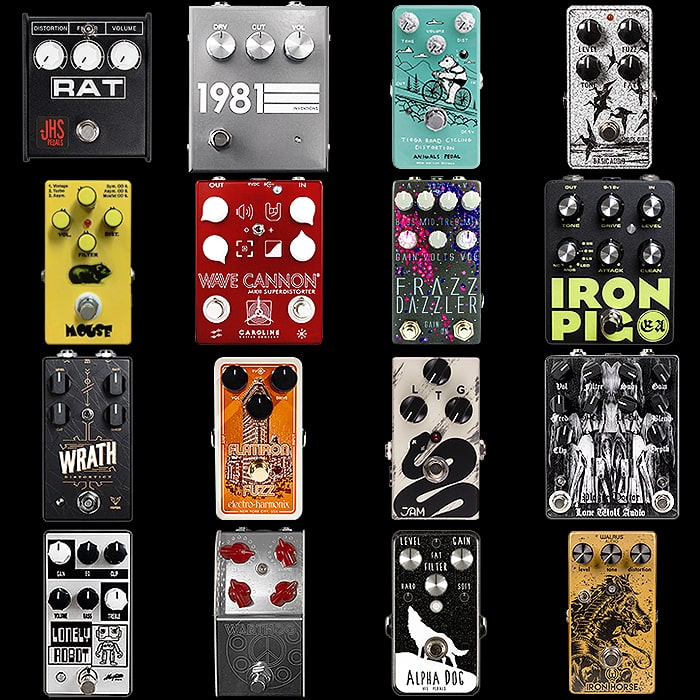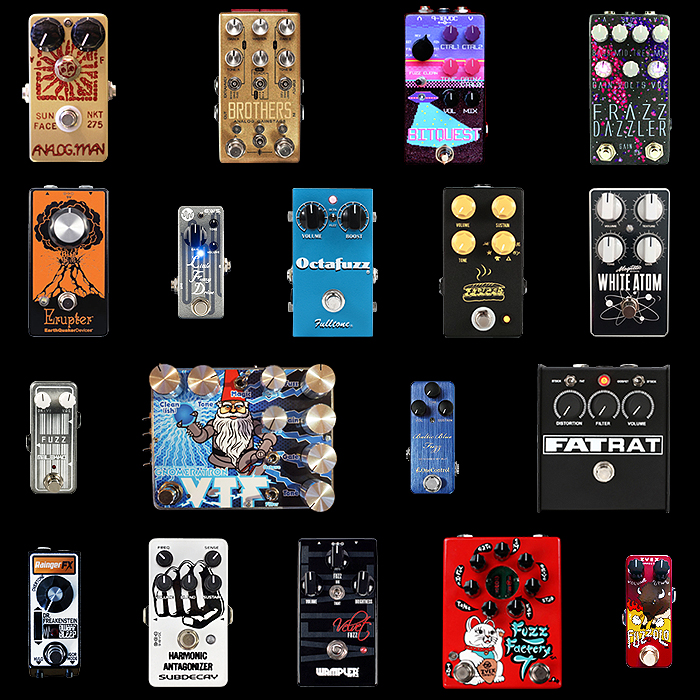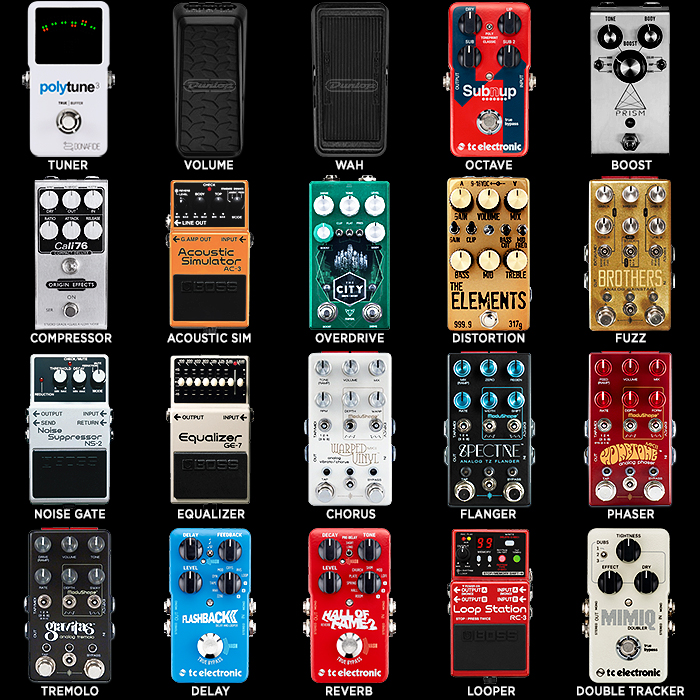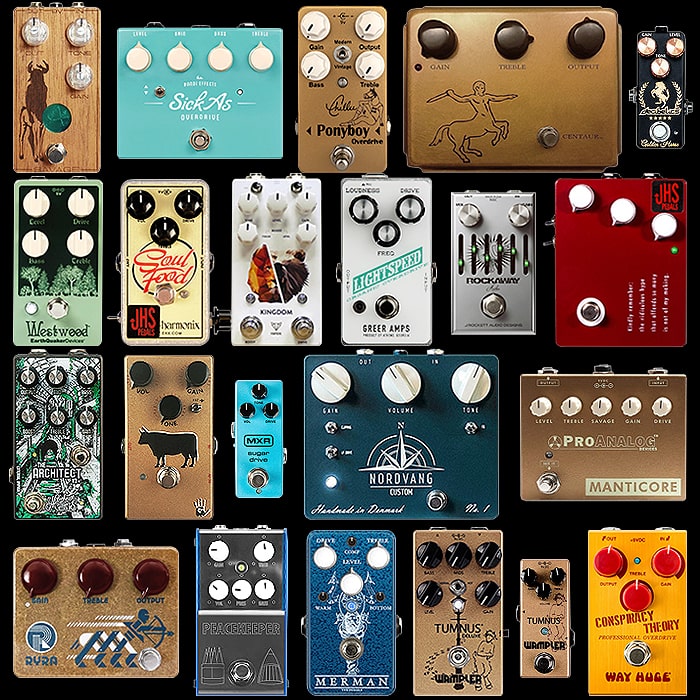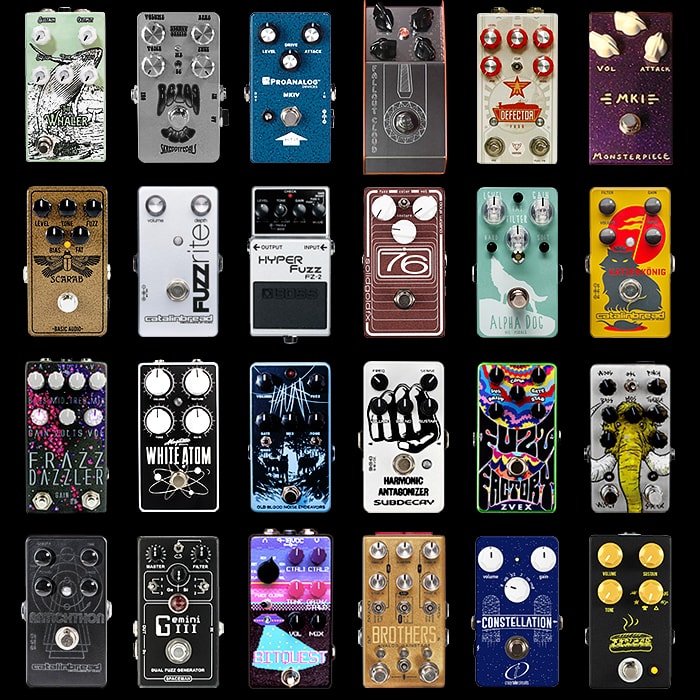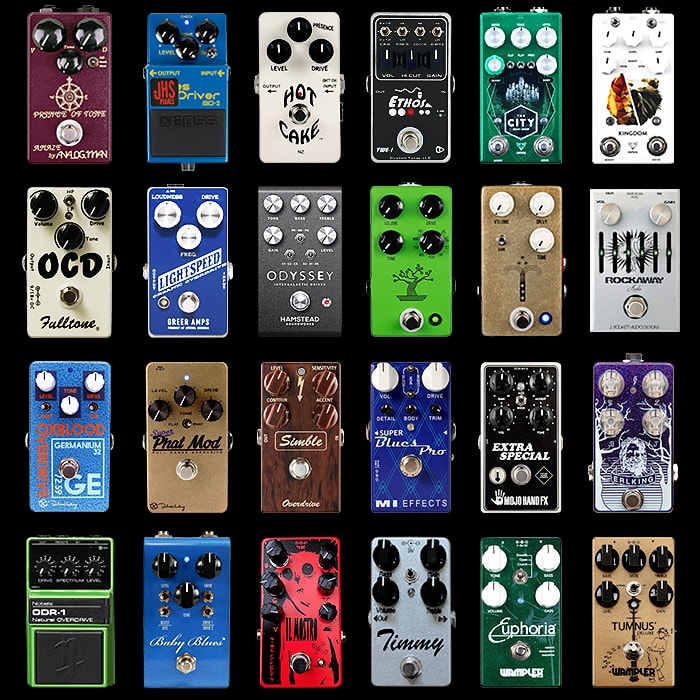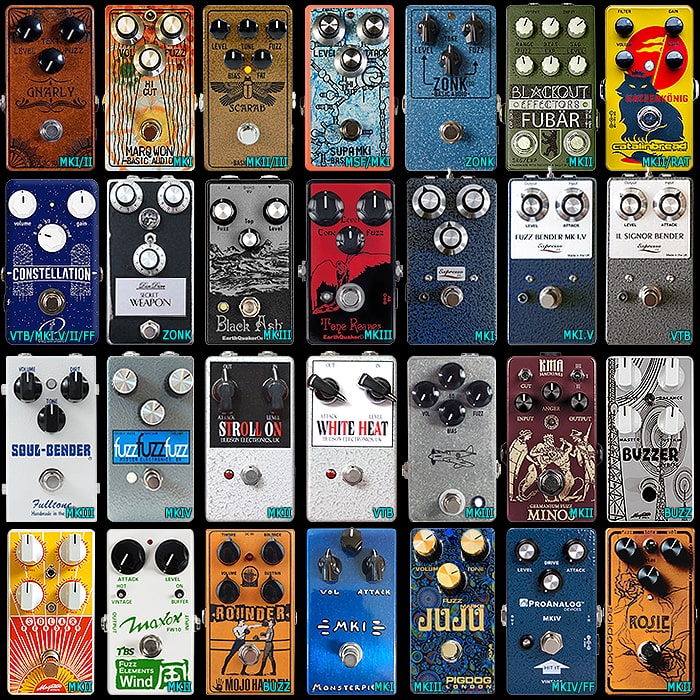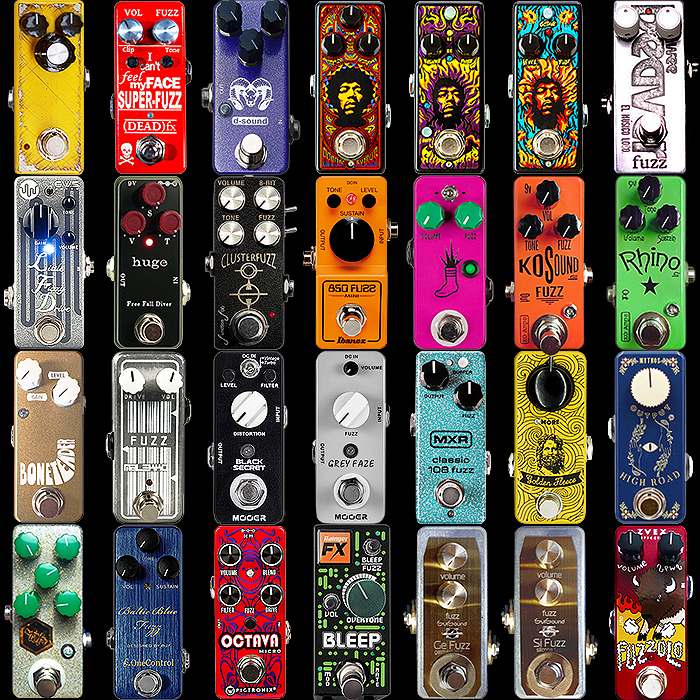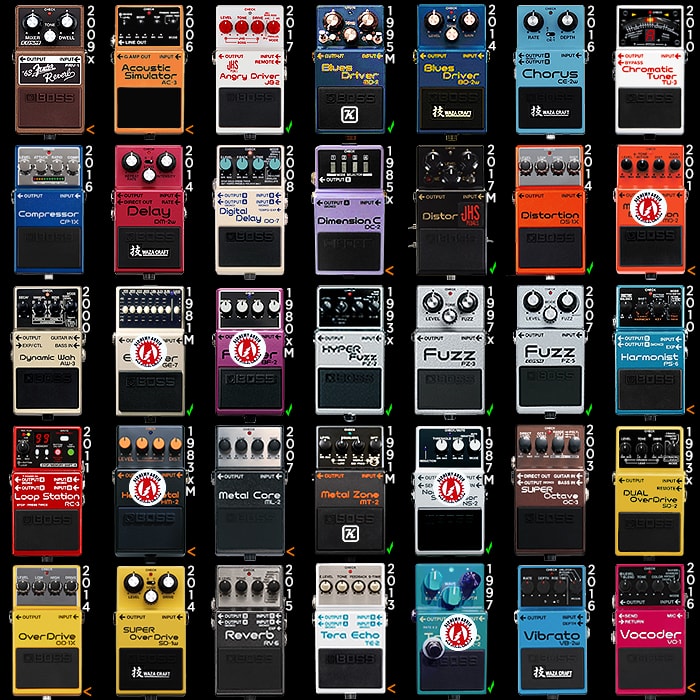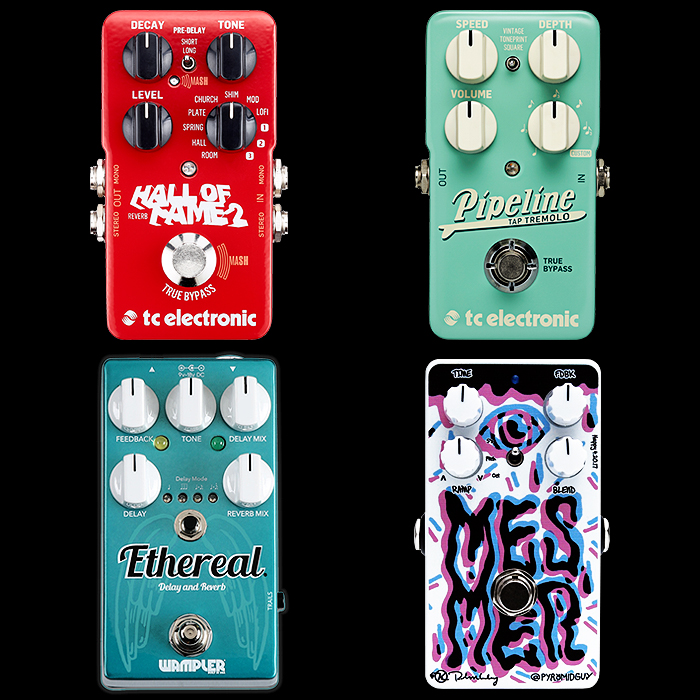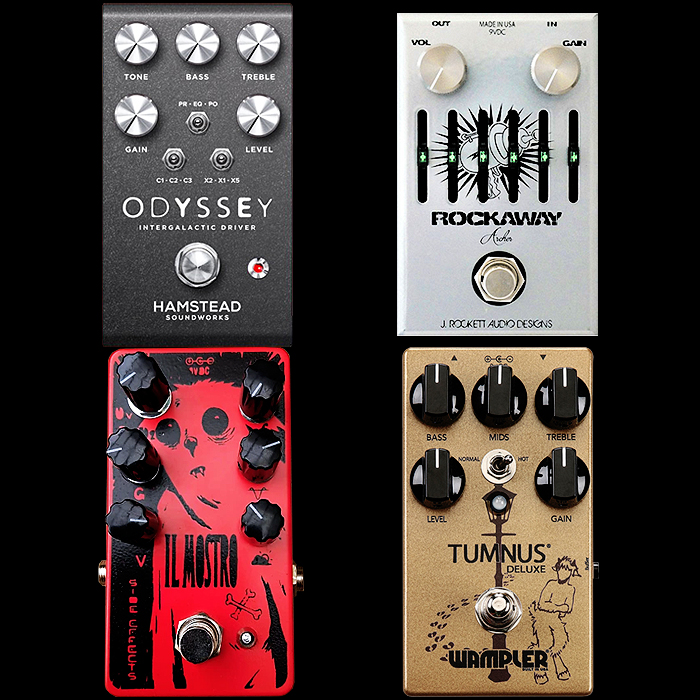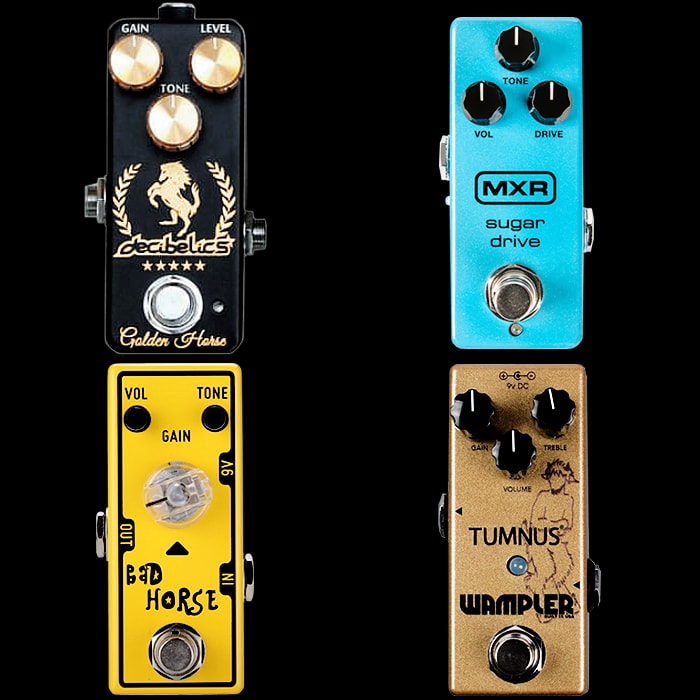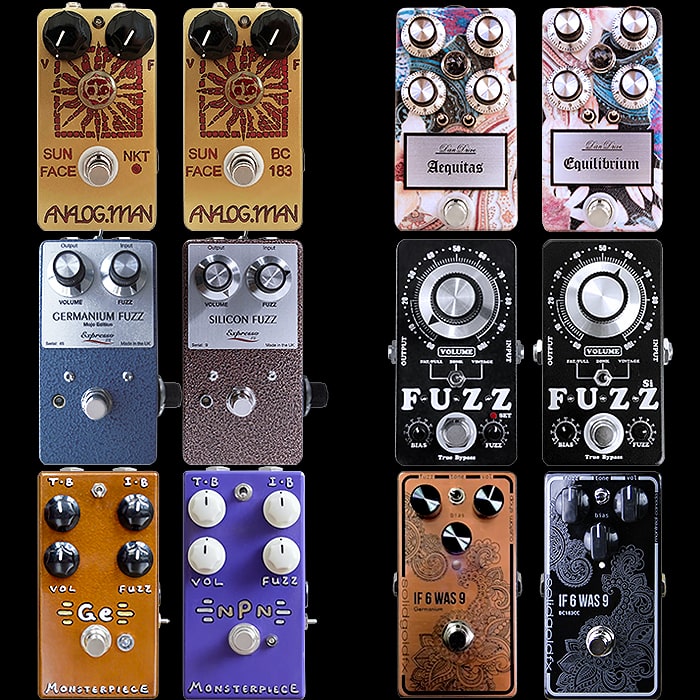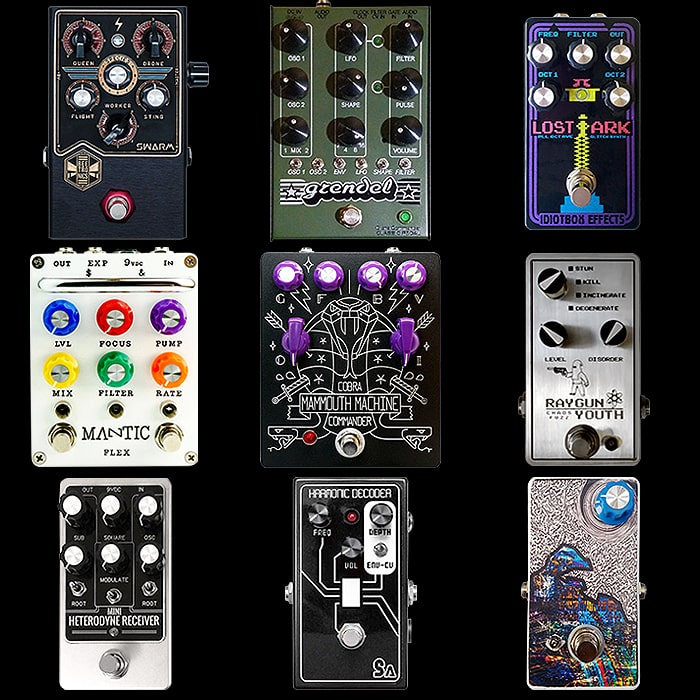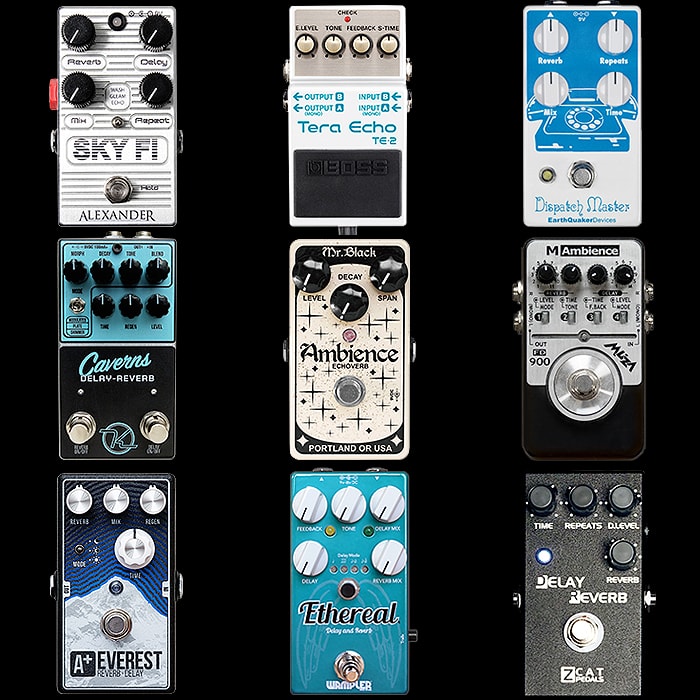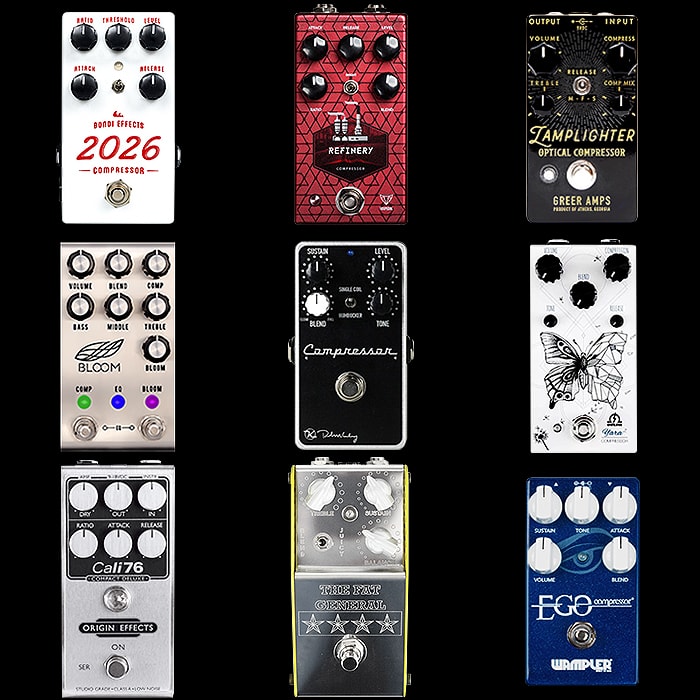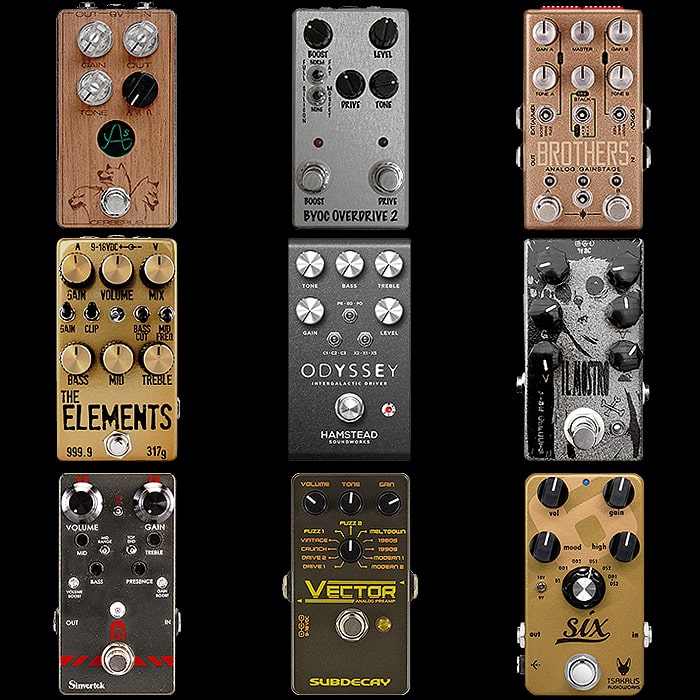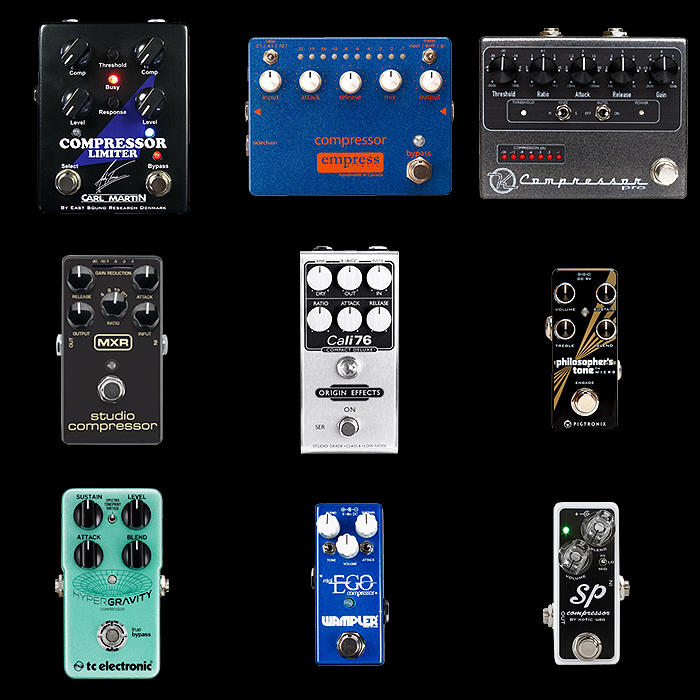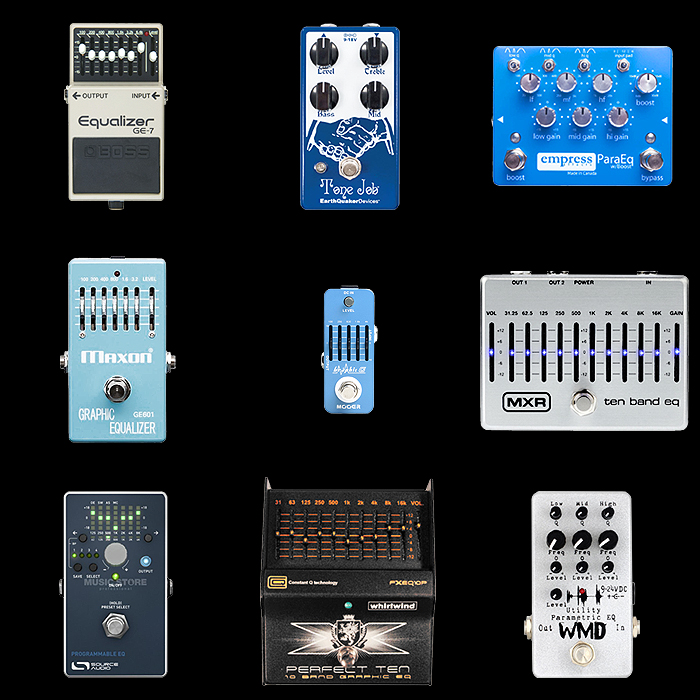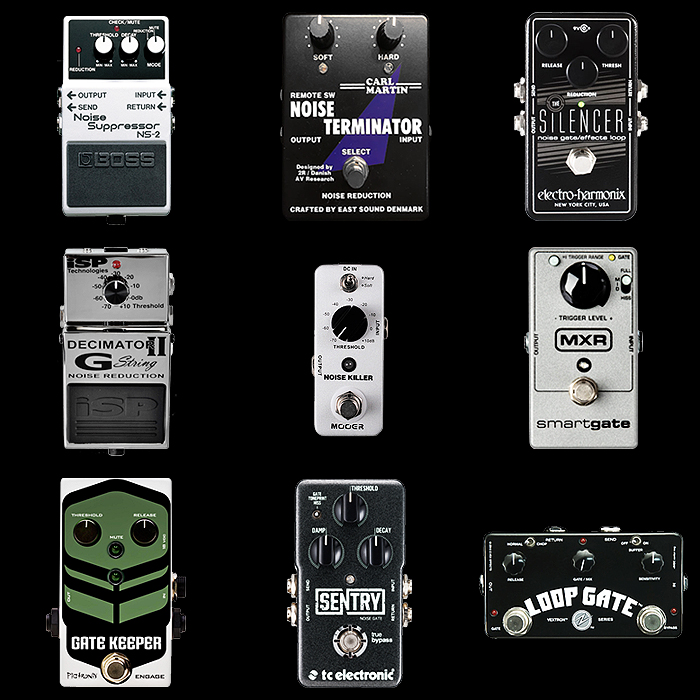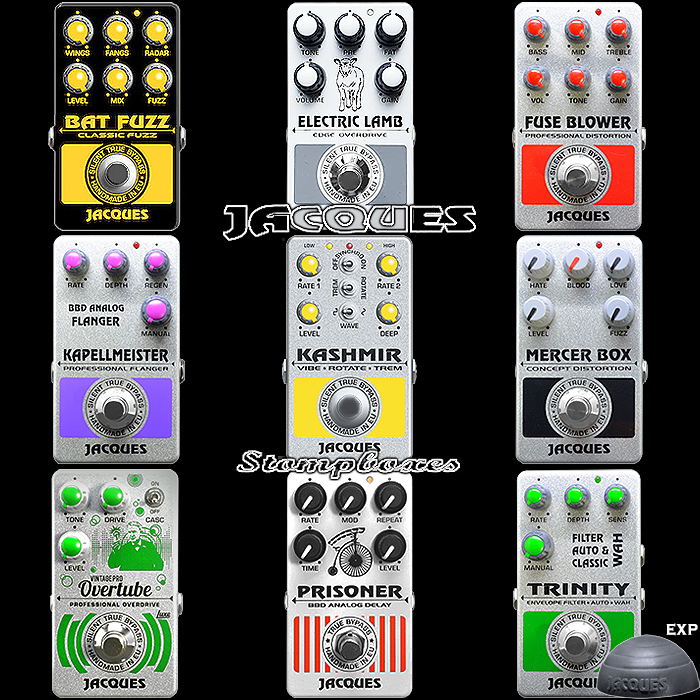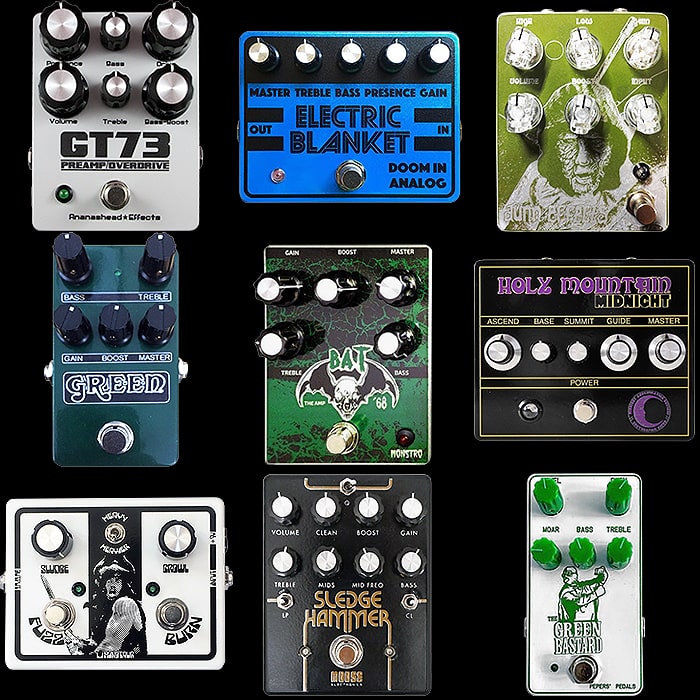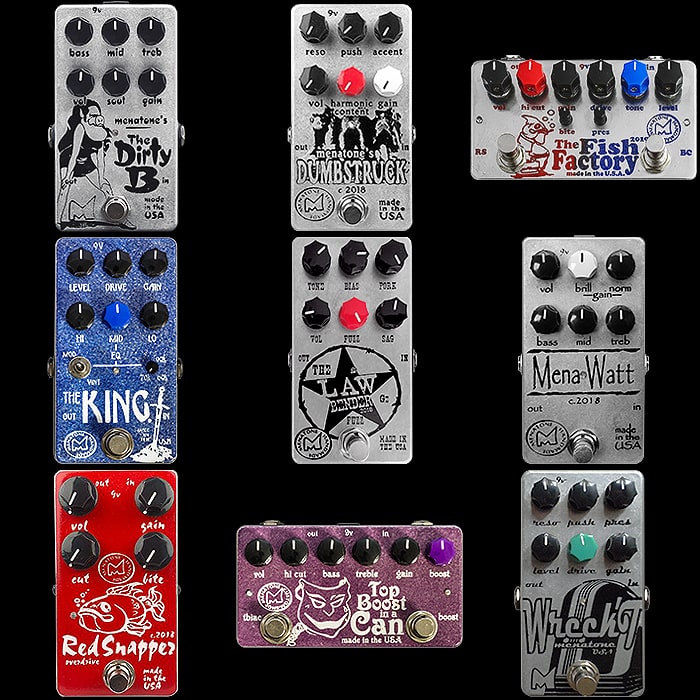The Art of Dialling It In - How to Tweak and Pivot Certain Drive and Fuzz Pedals
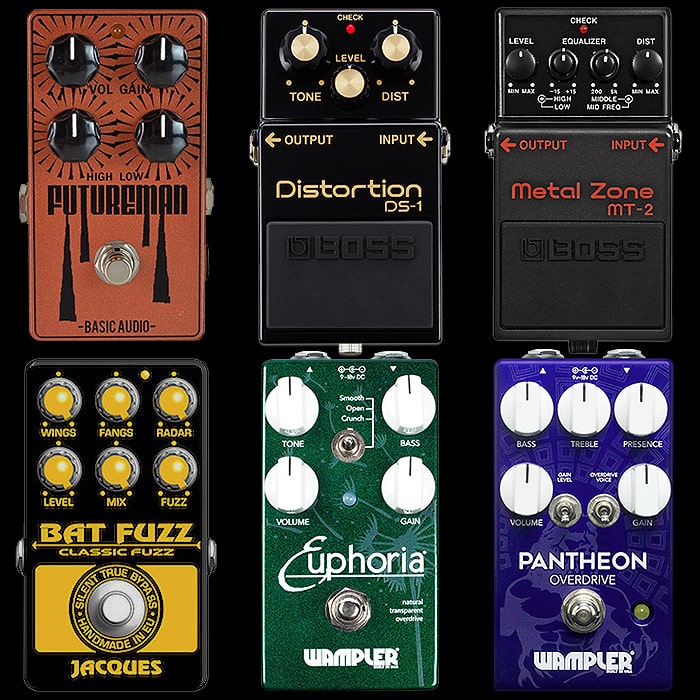
The above pictured assortment are all pedals where you can easily go wrong if you don’t know what you’re doing. I often read bizarre comments on Pedalboards of Doom how such and such a pedal is rubbish and overrated - where often it’s a case of mistaken identity and misuse. The first pedal I bought which I had major issues with was the Boss DS-1 Distortion. It sounded nothing like various demos I had heard, and to my ears sounded actually nothing like a distortion at all.
I will prequalify all of this by saying I run a dual amp stereo rig - which is very much based on default clean channel dynamics. While the Boss DS-1 was invented a long time ago where most amps really had just two settings - off and fully cranked. So the Boss DS-1 was not designed for a clean channel pedal platform at all, but was meant to ’push’ an already cooking valve amp - as more of a boost rather than a stand-alone distortion.
Most of us pedal fans set a new pedal to all dials at 12 o’clock when starting off, but this is not always a successful strategy - depending on exactly what kind of controls you are dealing with - are they Low Pass / High Pass Shelf Filters, Active or Parametric for instance - and what range do they cover and start from - is fully counter-clockwise true ’0’ and is fully cranked 100%? Or do you actually reach full gain / saturation earlier and the usable range is only say from 10 o’c til 2 o’c or 9 o’c til 3 o’c?
I have always advised that you should persevere and find that pedal’s range and sweet spots - some pedals have more range than others and some need very careful dialling in to get great tones, but do reward patient tweaking. Other pedals can be a touch too sensitive and are genuinely difficult to dial in - this is not really the case with any of the above - let us begin!
Pedals are listed in alphabetical order by brand as usual:
Basic Audio Futureman - $180
This pedal is based on the celebrated Colorsound Power Boost / Overdriver pedal which had the distinction of being pretty much permanently cranked into an equally cranked high headroom amp - as things were back in the 60s and 70s. To get the rich textures out of the pedal you really have to crank the Gain, and as it can be quite a dark sounding pedal - I find myself tweaking more the Low end than the High. In this case I find I get the most articulate and textured tones by cranking the Gain - then gently adjusting the Low and High settings - but where I do most of the significant tweaking on the guitar. So the pedal Gain is cranked, the volume is tolerably high, but then I use my guitar's Volume and Tone pots to properly adjust the tone to taste. If you don't crank the gain - you don't get that lovely rich texture - which you then need to tame a touch using your guitar volume dial - this is how I get the best out of this pedal - and it can sound pretty fantastic.
Boss DS-1 Distortion
This was formerly my most disappointing pedal purchase of all time. I had heard some very decent YouTube demos of this, but I just could not get it to sound good at all. My mistake was applying it to a totally clean channel obviously. As Bjørn Riis of Gilmourish fame aptly demonstrates above - you need to use the DS-1 as more of a boost type pedal - into something which already has at least a hair of gain on it. It reacts brilliantly to all types of early breakup, but has nothing to react to if there is no breakup at all to be found. So if you are using a clean channel pedal platform - the DS-1 can only be applied in tandem with another drive - it just won't do what it was designed to on a totally clean channel.
Boss MT-2 Metal Zone
This is another somewhat misunderstood Boss Distortion Pedal which has been both highly popular and heavily vilified since first introduced all the way back in 1991. For the last couple of years certain individuals have been saying it should be used more as a pre-amp straight into the power-sections of an amp - via the FX Loop - but this is not entirely the truth and it's not really how Boss designed it to work - you can watch all the early promo videos to see the pedal going directly into the front of the amps. This pedal does have quite a fizzy top note which was the thing back then and is not really the flavour of the month any more. There are huge amounts of modified Metal Zones which tame and adapt the mid and high frequency profiles for more acceptable contemporary tones - I for instance have Keeley's superb Twilight Zone Mod of this pedal. In terms of using a stock Metal Zone though you do need to be careful how you dial it in - particularly with regard to the top-end fizz. It has to be said also that this is something of a Fuzz-based gain to a degree which accounts for some of the fizz, but which was actually mostly intended. The ultimate remedy / tamer for this pedal is to pair it with a GE-7 EQ - which allows you to get far more rounded tones out of it. It will never completely compete with more modern distortions though as the circuit simply was not designed to push air in the same way! If you watched last year's Andertons Top 5 Pedals Shoot-out - you would have seen that the Metal Zone sounded pretty decent at the end of that. If you don't like the sound of the Metal Zone - then obviously pick something else or get one of the many modded ones that smooth out some of its supposed annoyances -
Jacques Stompboxes Bat Fuzz
This was the pedal I picked up after my recent French Pedals round-up. It's actually more intended as a metal pedal, but I prefer to use it as a high gain fuzz. The pedal in effect contains two different distortion circuits - a fuzz based one which you can isolate by dialling all the top-row knobs to 0 and turning the Mix fully to the right. This is the setting I have it on most frequently - Level at 3 o'clock, Mix on full-right and Fuzz on full - and all the top-row dials fully off. According to the instructions, full-right is supposed to be just the Fuzz Circuit as such, but the 3-band EQ settings will bleed through if you activated them. Wings, Fangs and Radar are simply just Lows, Mids and High -frequencies. I tend to like this pedal with the Mix mainly on the Fuzz circuit - the other distortion circuit is a more conventional, tighter, darker type of a kind which I already have represented in my chain - so the Mix dial for me stays very much in the right-hand hemisphere - while I do tweak the Wings and Fangs dials occasionally to tighten up and add more low-end to the fuzz - it's a really versatile pedal, and whether intentional or not - a touch quirky to boot too!
Wampler Euphoria OD
Both the Wampler Euphoria and Pantheon have fairly similar control dynamics - in that you have 3 different voicings which all involve quite significant changes to Volume and Gain to get the same sort of parity / unity / attack. Both pedals also have a single what I call 'additive' dial - Bass on the Euphoria and Presence on the Pantheon - you start those both on 0 - or fully counter-clockwise and then adjust to taste - rather than doing the 12 o'clock midway thing as is typical.
Wampler Pantheon OD
As mentioned above this has similar control dynamics with some additional complexity in the guise of 3-way Gain switching, as well as 3-way Clipping - with lower settings being Low Gain | Soft Clipping, middle being High Gain | Soft + Hard Clipping, and top setting being Medium Gain | Hard Clipping. Each combination of those will require separate adjustments to Volume and Gain much as in the same way as on the Euphoria's 3 voicings. My current preferred settings on the Pantheon are Bass at 11 o'c, Treble at 1 o'c, Presence at 10 o'c, Volume at 2 o'c and Gain at 3 o'c and both voicing toggles on lower settings.
Final Thoughts
Initially I was going to include the Fuzz Factory in this overview - but found there was a better balance with the 6 pedals in the current selection. The Fuzz Factory is actually a really complex pedal to dial in properly and many toss that pedal away as unusable as they simply don't understand the interplay between the 5 different dials. Each one has sensitivities towards the others - so you can't simply have all the dials set at the same thing and then just adjust one of the others - this is where Henning Pauly went wrong in his review / demo - you need to tweak the dials in concert really and find specific sweet-spot groupings of settings depending on what effect you're trying to get out of the pedal.
I've seen far too much throw-away stuff on the various Facebook discussion groups - usually the result of ignorance or intemperance. Meaning you need to be patient and delicate with certain pedals. Another pedal that I was considering including here was the MI Effects Super Crunch Box - which That Pedal Show kind of failed to get the best out of as it has so many different options and dials - and they struggled a little with option overload. It however still remains my favourite Brown Sound pedal and is incredibly versatile - but also quite touch-sensitive so you need to know what you're doing - start by getting the volume and gain sort of right for your needs, then set the sizzle via the presence and adjust the remaining 3-band EQ to taste!
There's a lot of misdirection and unmet expectations too - as I had for instance with the Boss DS-1 - I really did not know what I was doing - and even though I was patient and experimental, I did not realise that it would only properly work in tandem with some gain already on the channel. All pedals have typically had 100s of man-hours spent on tweaking their tonal profiles and ranges and each typically has best use-case scenarios. Some players like pedals with few controls and just one big sweet-spot but not a lot of range, while I am more of a tweaker and thus prefer more settings to get different tonalities and variety out of pedal. Some see it as a bad thing that a pedal has a huge amount of range in every direction - which also means you can dial in hideous combinations - but that is often the case with something properly versatile.
Generally you need to know what you're getting yourself into and be prepared to put in the necessary effort. Most of the time it's not the fault of the pedal - it's just that you chose the wrong thing for your own needs and expectations. I know lots of players who profess to dislike or hate even several of my own personal favourites - it is as they say in the old country - 'horses for courses'.



















